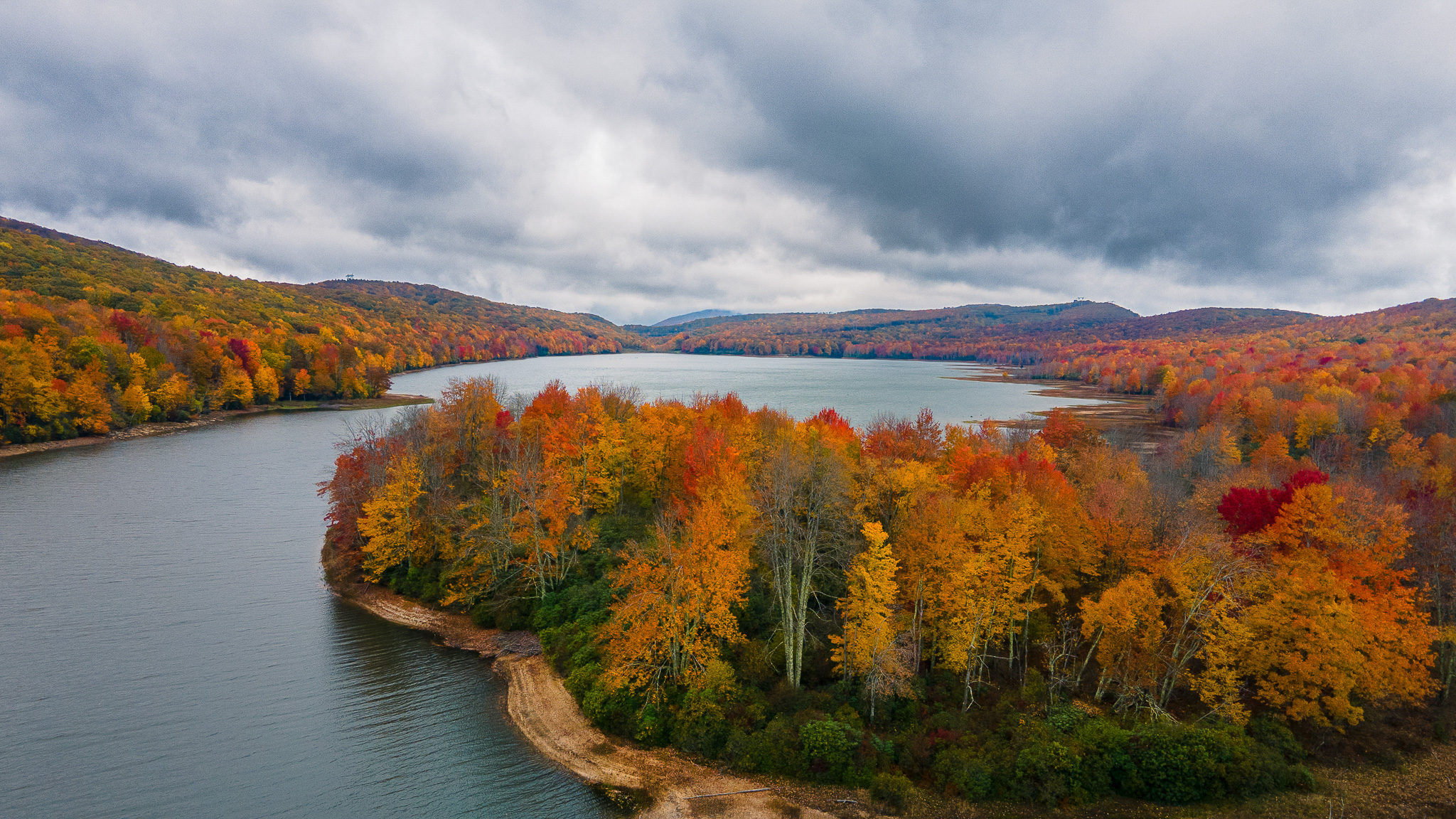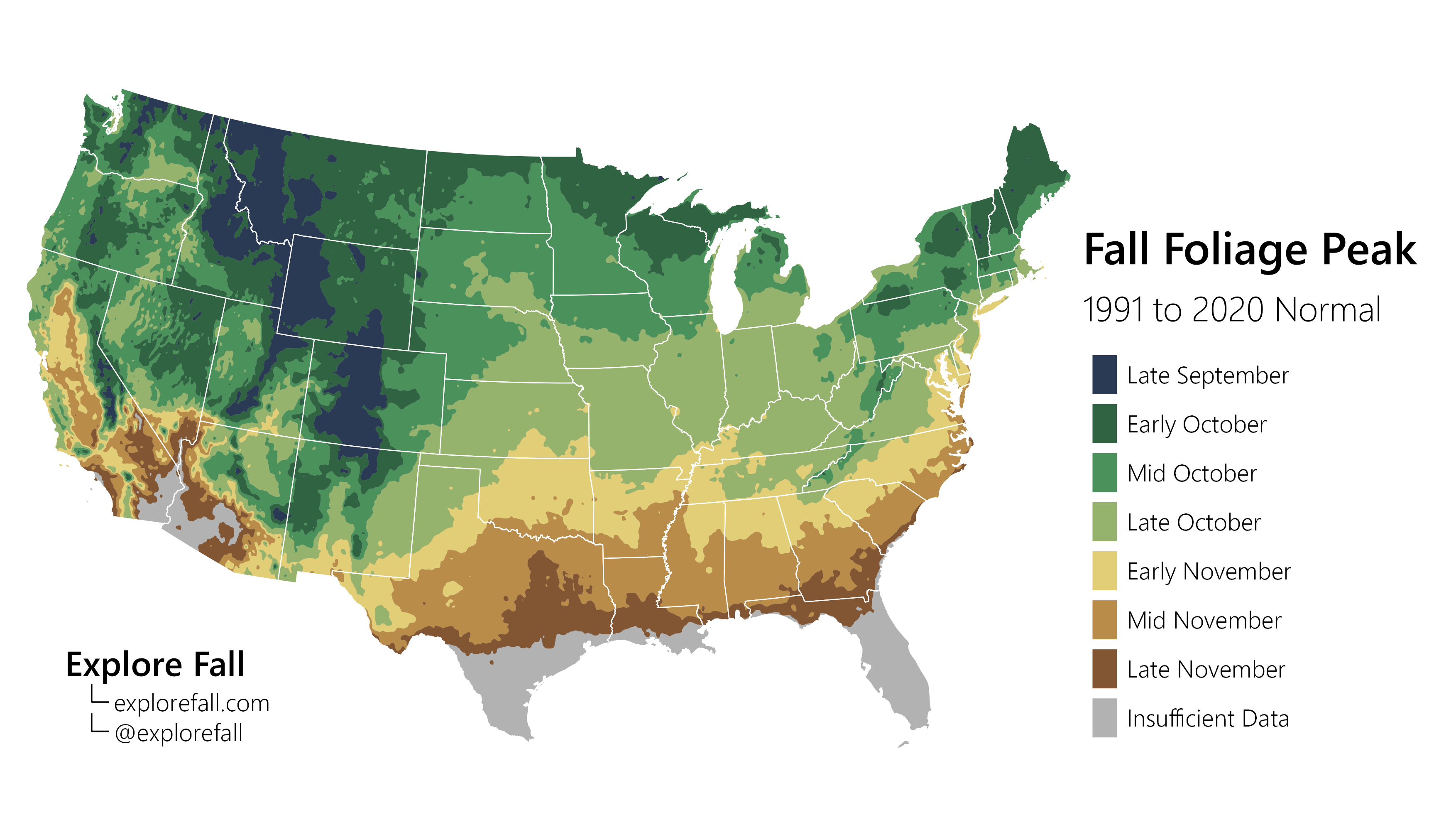
Fall Foliage Map 2024
Search for a location in the United States to get the latest fall foliage report:
Toggle between the color report
and confidence map layers:
Color Report
Peak Timing
Toggle between verified and
unverified fall foliage reports:
Verified
Unverified
Little to No Color
Low Color
Moderate Color
High Color
Peak Color
Past Peak Color
Coming Fall 2024
Powered by Esri

Two primary factors control the timing of fall foliage: daylight and temperature. This means that the further north and the higher in elevation a tree is, the earlier it will reveal it's colorful canopy. Photosynthesis grinds to a halt when the days grow short in the fall, and leaves no longer have a need for their excess stores of chlorophyll.
Over the course of a month or two, the concentrations of chlorophyll diminish, allowing less concentrated chemicals such as anthocyanin and carotenoids to dominate, turning the leaf red, yellow, or orange. The rate at which this change occurs varies amongst tree species, so it can be difficult to pinpoint a single peak in fall foliage.
Nevertheless, when the vast majority of trees in a particular area have full canopies of autumnal color, peak has arrived. Some areas, partiularly in the Northeast, experience vibrant red peaks due to an abundance of maple trees, while others experience a mixture of all of fall's colors. Different trees display different colors, giving each region its own unique peak.
For most of the United States, peak fall color arrives in the month of October. This is when wide swaths of the Northeast, Midwest, and Western states are aglow with bright fall foliage, and more than 80% of travelers make their fall foliage trips. Some less-populated regions will peak in September (August in northern Alaska), while the southernmost states hold off until mid-November.
The most popular fall foliage displays are found in New England, where approximately ten million people travel each year in hopes of photographing or simply walking through fall's splendor. Northern Vermont, New Hampshire, and northwestern Maine experience peak in early October, while much of New York, Massachusetts, and Pennsylvania have to wait until later in the month.
Out west, golden Aspens peak in sweeping displays in late September and early October, just prior to the invasive chill of winter. Non-desert, lower elevations in the Northwest are further delayed into late October/early November; however, the wait is well worth it.


If you've ever traveled in search of fall foliage before, you likely know how tricky it can be to be in the right place at the right time. The timing of peak color varies signficantly season-to-season, meaning what worked one year might not work the next! The best fall trips take careful planning, a lot of patience, and a reliable fall foliage map.
It's helpful to establish a baseline for when leaves normally change. Maps, like the one in the above section, can help you identify roughly when in the season you should be planning your trip. From there, you should consult a real-time fall foliage map like ours to see if fall foliage is on-time or running early/late due to ongoing weather conditions.
If at all possible, don't solidify your plans until you're two weeks out from peak fall foliage. This allows you to be flexible should extreme weather rear its head and disrupt the normal progression of fall foliage. Should that not be an option for you, do your planning in early September when fall foliage experts can give you an idea of whether or not fall color is on-time this year.
You'll want to make the most of your time in fall's splendor, so be sure to pick out a few beautiful hikes or drives on which you can truly be emmersed in autumnal glory. If you're looking to beat the crowds, consider going to popular locations very early in the morning, before the majority of people arrive. Sunrise bathes fall foliage in golden hues, making early morning one of the best times to venture out!